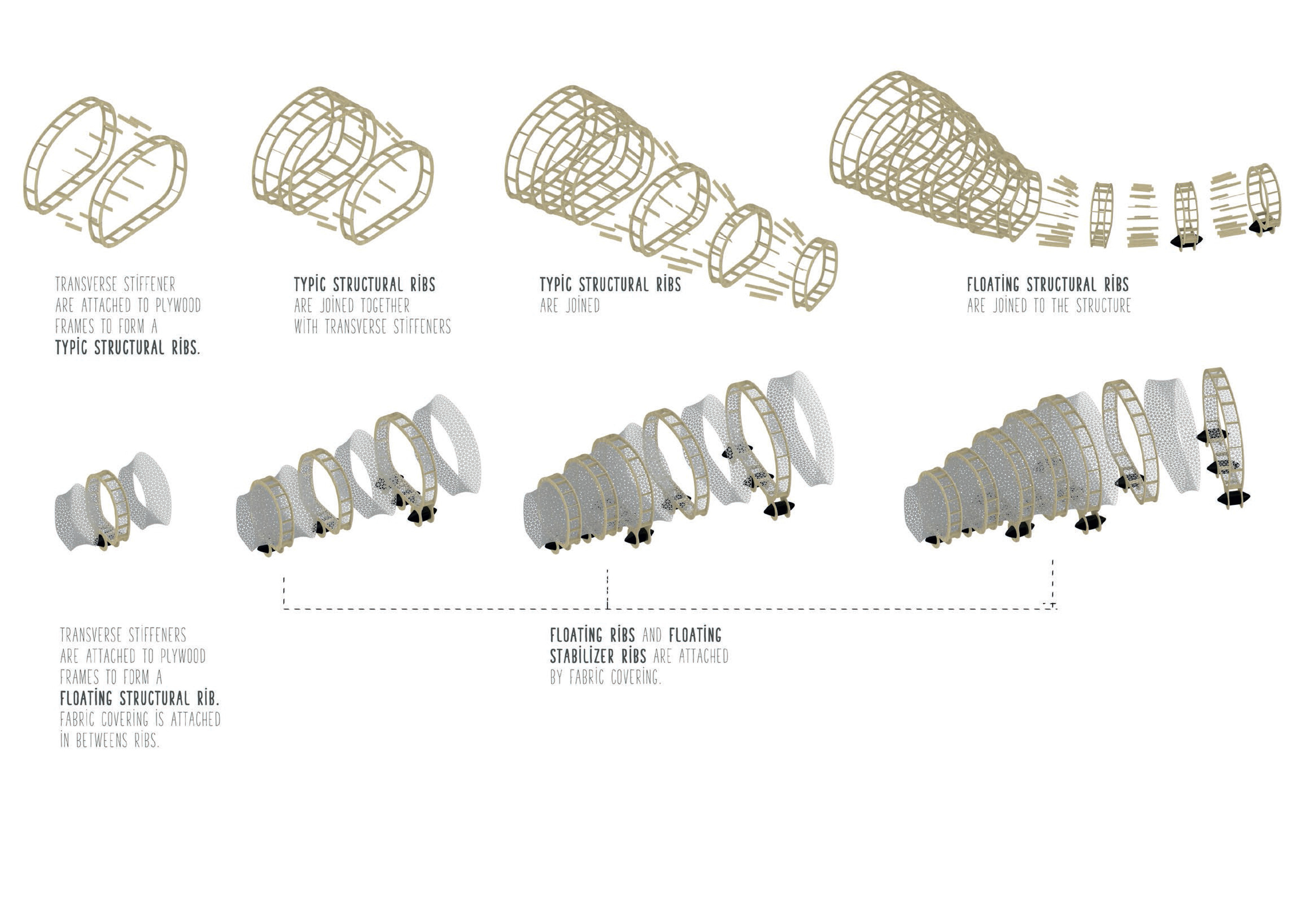

AMPHIBIA
An ephemeral metamorphic installation about the adaptation to the environment
'Amphibia' is a play-sensory installation about the fragile and ephemeral complexity of the environment, and the importance of preserve the biodiversity. Amphibia is a metaphor about the transition between two different life fases and between two different worlds, the way it does its proposing to interact with two medium: earth and water.
Amphibia is a call to understand and learn the importance of the preservation of ecosystems and the preservation of biodiversity.
We propose a sensorial interface connecting two different scenarios between an complex and sensitive interiority, that brings the aquatic environment into land, and vice-versa.
As Alice in Wonderland, this installation will be a secret passage that connects with other world, a wet, translucent and in constant movement place, and allows us to experiment from another spatiality the complexity and the richness of this beautiful ecosystem, their sounds and sensations.


Amphibia is formed by a single structure consisting of two different parts, one frustoconical and fixed, located on the lakeshore, and the other one a mobile more organically form. Both connected together through a flexible passageway.
The first part lies firmly on land, while the other part floats freely in the water through an articulated wood structure and flotation buoys, as a big mitological skeleton creature.
Amphibia will be an object to get in, stay or travel until reaching the other place, will be an amplifier of the environment's sounds, a sensory connector between the forest and the lake life.






Technical Specifications
The installation is composed of a hollow structure formed by two parts and joined together by a flexible passageway.
The first will be a wooden construction that will be fixed on the lakeshore soil, will be constructed with a sheet plywood structure cutted in cnc router, and covered with curved wood sheets.
The second one will also be constructed with a wood rib structure attached to a floating buoy system, forming a cervical skeleton type structure, covered with a waterproof fabric skin, will therefore be a lightweight and floating object.
The passage sector will be made of mixed construction between the two materialities: a transition between the first part, darker and heavier and the floating part, more luminous and active.
Fabrication Process
First, the whole installation will be digitally designed and 3D prototypes will be made using parametric design software, after this stage of analysis and prototyping, main parts of the installation will be fabricated in workshop, through a simple assembly chain. The pieces of wood that conform the structure will be realized using CNC cutting router.
The floating system will be made of fiberglass and resins buoys, using a mold that will act as a matrix, each mold will produce one-half of a buoy, which will then be joined to another and sealed to ensure its buoyancy, the buoys will be joined together by an simply articulation, forming a floating flexible cervical-like structure.
The land-fixed part will be covered with wooden sheets arranged according to a parametric pattern previously designed. The floating body will be covered with a waterproof fabric placed between ribs, working like a bellows, accompanying the movement of the object in the water.
Assembling
Subsequently to its manufacture the main pieces will be transported to and mounted in the site previously chosen, where they will be assembled to each other.
First the land-fixed part will be mounted and covered with the wood sheets, then the buoy floating system will be attached to it, then the wood ribs will be put in place, and finally the covering is settled.
_
CREDITS
Location: Strafford, New Hampshire, United States
Organization: Beam Camp
Year: 2017
Status: Competition
Program: Instalation
Team: Jeff Chicarelli and Matías Gatti
Organization: Beam Camp
Year: 2017
Status: Competition
Program: Instalation
Team: Jeff Chicarelli and Matías Gatti









